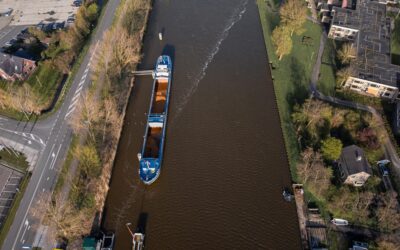The new UN treaty on plastic pollution has been hailed as the most important environmental agreement since the 2015 Paris Accord. But as with the Paris Accord, the hard work starts now if we are to see an end to plastic pollution.
A new agreement could signal the end of plastic pollution. Delegates to the UN Environment Assembly (UNEA) at the beginning of March adopted a resolution, which would kickstart negotiations on a legally binding agreement to end plastic pollution.
On the face of it, it sounds like an agreement to get an agreement. So why has it been heralded as so significant?
- UNEA is the most important environmental decision-making body in the world, so when it publishes a resolution, the world sits up and listens – especially one that is backed by more than 170 countries, including the US, which has not previously signed up to act on plastic pollution.
- The resolution also sets out some lofty ambitions: It calls for an agreement that covers the full plastic lifecycle, setting rules to eliminate unnecessary plastic use. There had been fears prior to the UNEA meeting in Nairobi, Kenya, that any resolution would only cover waste management and clean-up. UNEA has got all stakeholders to unite behind a much broader ambition.
- There should be a robust funding mechanism to ensure that the treaty can be effectively implemented, particularly in developing countries, and to support with monitoring.
- And finally, the agreement should be ready by the end of 2024 – a blisteringly ambitious timetable compared with most international agreements. Inger Anderson, secretary-general of the UN Environment Programme has stressed that there should be no let-up in voluntary efforts to reduce plastic pollution while we wait for an agreement; this is not a “a two-year pause”.
Negotiations are expected to get underway within months. An intergovernmental negotiating committee will be formed to lead the talks. Negotiations shouldn’t take place in isolation, however; they should encompass the views of a broad range of stakeholders including industry, civil society and indigenous communities. Without that, the resolution makes clear, it will be impossible to build an agreement that works for all parties.
Challenges
While a number of global consumer goods companies, including Unilever, Procter & Gamble and Coca-Cola have welcomed the agreement, building consensus on the scale suggested will be tricky. There are still a lot of vested interests, which may be aiming to water down the legally binding elements of the agreement as much as possible.
The resolution seeks to completely transform how we produce, use and dispose of plastics with a view to creating a fully circular economy. This is an ambitious goal. However, until the final details are agreed, it is unclear whether the agreement will require countries to totally eliminate plastic pollution, and if so, by when and how?
There are also vast disparities in how waste is managed in different countries, with many developing economies having no formal or poor waste management systems. Individual countries will need to build national action plans to reduce plastic production, prevent leakage of plastics into the environment and improve waste management acknowledging the local context.
There are two existing models for monitoring national targets of this sort: the 1989 Montréal Protocol on the use of CFCs (chlorofluorocarbons) and the Paris Accord. The hope is that the new agreement borrows much more from the former agreement, which set prescriptive targets for each country to reduce its CFC use. These progressive and structured targets have been seen as fundamental to the treaty’s success and a gradual shrinking in the size of the hole in the ozone layer. However, the current plastic resolution appears to be inspired more by Paris. The Paris Accord, on the other hand, allows countries the freedom to determine their own targets for emissions reductions based on what they feel is feasible rather than necessary to meet the 1.5°C goal.
Living to this ambition
We hope this agreement lives up to its goal to transform the full plastics lifecycle from source to reuse. That means it will also need to address the lack of regulation around plastic in rivers – a critical step if we are to limit the impact of plastic in our oceans.
It is clear that the resolution sets out a solid ambition, but as with all international agreements, the devil will be in the detail. The Great Bubble Barrier will actively push and support this ambition, together with its partners. Collaboration is key to solve this global problem.
Author
Dr. Sarah Walkley
Sarah is a freelance copywriter specialising in sustainability topics and volunteers at The Great Bubble Barrier.
Click here to find out more about the Giant Plastic Tap installation pictured (Header image), which was created by international artist and activist Benjamin Von Wong, © Von Wong Productions




